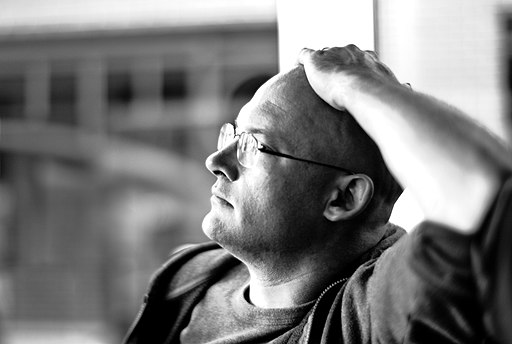A Sketchbook for the Project (Part 3 of 3)
The following is an excerpt from a 17 October 2014 email exchange between Art and Will.
 |
| Clay Shirky |
Art:
I've been thinking some more along the open source, JamKazam lines. I did go to the site and was favorably impressed/intimidated with the professionalism and smoothness of the interface.
It sounds like the live component will remain free forever; the more intensive, after-the-fact multitracking option will be available for a small price after the beta period is complete.
On a related topic, I want you to watch this little segment about ePortfolios, which I happen to be getting up and running for my non-AP seniors this year. The section I'm starting you at has to do with the concept intrinsic motivation and its relationship to successful websites.
These are the three keys according to Clay Shirky:
- Make people feel good about participating
- Give users autonomy
- Keep the system as open as possible
I think this is our business plan moving forward: to make the blog as close to this as possible.
What does that look like? I have a few ideas and I'd like to hear some of yours. Perhaps this would be a good time to seek out input from some of the people visiting the blog or one of its social media platforms.
For one, we open up the "sketchbook" and take every opportunity to share what we're working on, warts and all. We already do that with the conceptual underpinnings of the site by posting our emails, but I think we need to start doing that with the music by posting YouTube videos of me playing songs in my basement "studio."
Although this development breaks out of one paradigm--the overemphasis on finished product and the exclusion of process--it remains entrenched in the one-way artist-to-audience orientation of artmaking. The new frontier for us--in addition to opening the door to a more process-oriented approach--is to engender a more symbiotic model of artmaking and to harness the power of the "open source" paradigm. As Helen Barrett points out, it is this paradigm that allowed Wikipedia to utterly destroy Microsoft Encarta (10:45 in the same video). A similar fate may await musicians and artists who cannot find ways of capitalizing on this trend.
So, again, what would that look like?
I think Jamkazam could break this thing wide open for us.
Consider a page on the blog that would host the sharable, editable Jamkazam recordings of our songs. You and/or I would do the initial recording, but we would encourage others to get subscriptions to Jamkazam and start adding to these recordings at their leisure. Other, related materials, such as sheet music, would also be made available. Some of this, too, could be given an open source feel by sharing them as editable Google Docs (rather than read-only pdfs!). Yes, some of this seems risky, but we take on that risk and bend over backwards to (1) make people feel good about participating, (2) give users autonomy, and (3) keep the system as open as possible. This, of course, could create a superabundance of material to post to our various platforms. And, of course, I am not forgetting that this is exactly what we originally were thinking way back when!
Okay, before getting too excited, take a moment to realize that all of this is easier said than done.
But, really, I'm talking about one additional page to set up within the blog. Perhaps also another page where, as mentioned in a recent email, we explain to our audience what we are trying to accomplish.
All of this is a big change in our basic trajectory, but one well worth pursuing.
I say Arthur White is open source or nothing!
You mentioned that the CEO of JamKazam contacted you personally. I wonder if you could somehow explain the above ideas to him and see what he thinks. If nothing else, maybe we could get his endorsement (in the form of a quote that we have permission to post to this page on the site). After all, from what I've just outlined, we may be using this as our main platform and actively sharing it to as wide of an audience as possible.

No comments:
Post a Comment